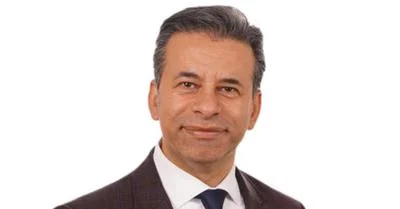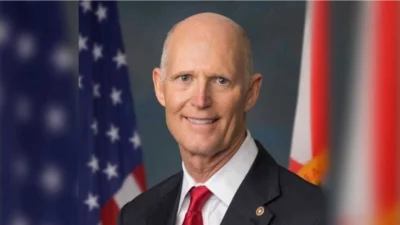The Congressional Record is a unique source of public documentation. It started in 1873, documenting nearly all the major and minor policies being discussed and debated.
“BILL WILEY, A UNIQUE RESOURCE” mentioning the U.S. Dept. of Energy was published in the Extensions of Remarks section on pages E1881-E1882 on Oct. 1, 1996.
The publication is reproduced in full below:
BILL WILEY, A UNIQUE RESOURCE
______
HON. NORMAN D. DICKS
of washington
in the house of representatives
Monday, September 30, 1996
Mr. DICKS. Mr. Speaker, I wanted to bring to my colleagues' attention the loss of a unique resource in the State of Washington, indeed, the entire country. Dr. Bill Wiley, who has served in many capacities over the past 30 years, passed away on June 30, 1996. While he was only 54, he made many contributions to many causes and left us at too early an age.
I first met Bill Wiley in 1984 when he became director of the Pacific Northwest National Laboratory, operated by Battelle Memorial Institute. While Battelle has many facilities in the State of Washington, at that time they did not have any in the Sixth District. Subsequently, the Marine Sciences Laboratory at Sequim became a part of the Sixth District after the reapportinment of 1990. Battelle also has facilities at Seattle and Richland, and Bill Wiley was the senior official for Battelle in the Pacific Northwest from 1984 until 1994, at which time he was named senior vice president for science and technology policy for Battelle Memorial Institute and his portfolio expanded to the world.
Bill Wiley was a tremendous resource in his community of Richland, indeed, the entire Tri-Cities area. He was a member of the Rotary, Tri-
City Industrial Development Council, and chairman of the United Way Campaign. His community service was highlighted in 1989 when he was selected by his fellow community leaders as Tri-Citian-of-the-Year.
Bill Wiley had so much enthusiasm and so much to give that his talents were sought by the entire State of Washington. Since Bill Wiley was a perfect demonstration of what educational opportunity can provide, he spent a good deal of his time on this issue. Education was a primary interest of his and, therefore, it was not surprising that he was selected to be a member of the first Washington Higher Education Coordinating Board. He also served as a member of the Board of Regents of Gonzaga University, a member of the Board of Overseers at Whitman College, and was most recently a member of the Board of Regents of Washington State University, having also served as Chairman of this Board. Additionally, he served as a member of the Washington Board of the Mathematics, Engineering, and Science Achievement [MESA] organization which is chartered to enhance the capabilities for young students of minority populations to pursue science and engineering careers. Bill also served on the Board of the Commission for Student Learning for the State of Washington.
Bill Wiley was also a good corporate citizen. He was a member of the Board at Trustees of Fred Hutchinson Cancer Center, as well as a member of the Boards of Directors of the SAFECO Company, the Washington Business Roundtable, ``Forward Washington,'' the Seattle branch of the Federal Reserve Bank of San Francisco, and the Pacific Science Center. When Governor Lowry was elected in 1992, he asked Bill Wiley to serve on his advisory committee for addressing statewide issues.
Soon the Pacific Northwest region sought out this man of many talents. He became a member of the Board of the Oregon Graduate Institute, and was later named to the Board of the Pacific Northwest Natural Gas Co., and he provided many years of service to the Oregon Museum of Science and Industry.
Not surprisingly, the Nation learned about this man of remarkable skills, and many organizations recognized his contributions to science and technology issues as well as education challenges. He was selected to be a member of the Government-University Industry Roundtable [GUIR]; he was asked to serve on several task forces of the Center for Strategic and International Studies and Office of Technology Assessment. He was a lifelong member of the American Association for the Advancement of Science [AAAS] and had been named cochairman of the upcoming annual meeting to be held in Seattle in February 1997. He also was an invited participant in the Economic Conference convened by President Clinton and Vice President Gore in Little Rock, AR in December 1992. Bill Wiley was recognized for his talents by being selected Black Engineer of the Year by Black Engineer magazine as well as receiving a distinguished associate award from the U.S. Department of Energy in 1994. Bill Wiley had recently been selected to serve on the Smithsonian Institution's National Board and been elected president of Sigma Xi, the Scientific Society of America. I think, Mr. Speaker, you can begin to get the sense of this man and his contributions to society at all levels.
I will not stop there. The man had a vision that covered the globe. He was instrumental in supporting Battelle's efforts to create Energy Efficiency Centers in third world countries. He was a driving force in Battelle's efforts to develop these centers in Russia, Ukraine, Bulgaria, Poland, and China.
What I have omitted in this statement is the fact that Bill Wiley was the director of the Pacific Northwest National Laboratory for 10 years, from 1984 to 1994. This, itself, is a full-time job with many challenges. His vision as director of this laboratory was to build a great national laboratory. The raison d'etre of this vision was the Environmental Molecular Sciences Laboratory, which I have had the pleasure of supporting and helping make happen over the last 5 years. When this laboratory opens later this year, it truly will be a monument to Bill Wiley's vision and what science can do to solve mankind's problems.
Mr. Speaker, this son of a shoemaker from Jackson, MS, through education and dedication, made his community, his State, his Pacific Northwest that he loved, so dearly, his country and, indeed, the world a better place to live. He was memorialized by the Tri-City Herald newspaper following his death, and I am inserting for the Record the text of that editorial, suggesting that the EMSL should be named in his honor.
EMSL Should Carry Bill Wiley's Name
It was 10 years ago when Bill Wiley proposed his vision of a laboratory where top scientific experts could collaborate on molecular science.
His vision was of a new era of innovation on the molecular level with far-reaching implications in a variety of fields, including medicine, energy and environmental cleanup.
That vision is coming to fruition as the Environmental Molecular Science Laboratory is readied for occupancy with installation of state-of-the-art equipment for the cutting-edge work that will be conducted there.
The workers are building on a foundation that is Wiley's heart and soul. But he will not be there to cut the ribbon. The former director of Pacific Northwest National Laboratory died June 30.
At Wiley's funeral earlier this month, a colleague, Jack White, proposed EMSL carry the name of the man who conceived it.
It's a good idea and one we hope Martha Krebs, the Department of Energy chief of national labs, will consider. She arrives tonight in the Tri-Cities to review EMSL's progress.
After October, about 210 permanent staff will move into EMSL, which also will accommodate scores of visiting scientists and students. The lab is expected to be 100 percent complete by fall 1997.
The annual research and operating budget will be about $70 million.
On a 1994 visit, Krebs gave Wiley credit for steering EMSL along the bumpy path of congressional approval and financing.
``Battelle, especially under the guidance of Bill Wiley, has exercised extraordinary leadership in the past 10 years in anticipating the direction that national labs must go,'' said Krebs, who spent seven years on the House of Representatives' Committee on Science and Technology.
Under Bill Madis, Wiley's successor, this laboratory is positioned to make worldwide contributions that go beyond Hanford.
The entire thing started in Wiley's imagination and was rooted in his conviction that the molecular revolution will be just as critical to human advancement as was the industrial revolution and the atomic age.
It is fitting such a visionary and groundbreaking facility be named after such a visionary and groundbreaking man.
____________________








